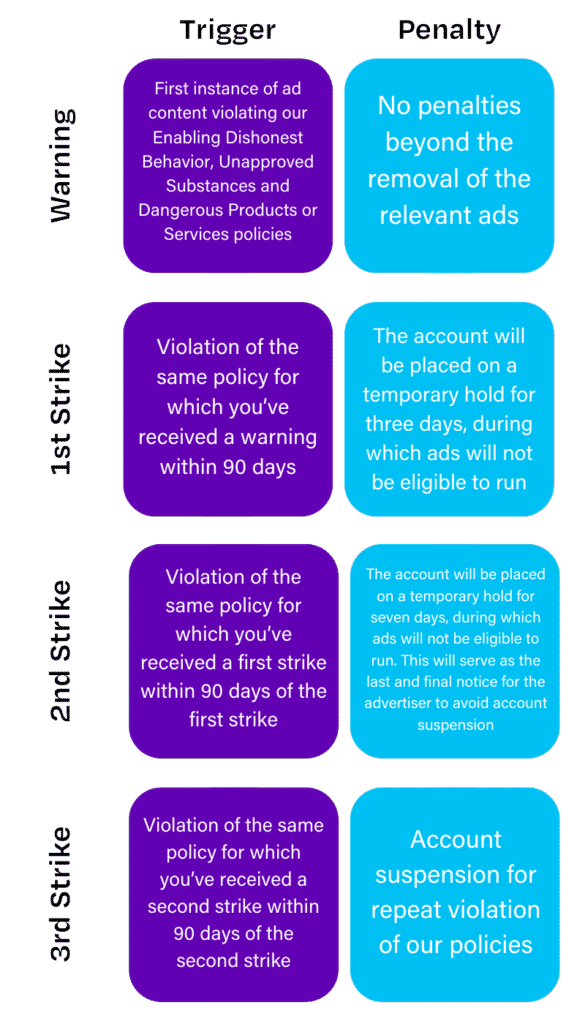Changes to the ad platforms are always met with a bit of hesitation. Change is scary, I know! But do you need to worry about this new 3-strikes rule Google is rolling out? Probably not, but there are some things you will still want to be aware of.
We like efficiency here at Optily, so here’s our 30-second lowdown:
What? Tech giant Google recently announced that they’re implementing a 3-strike system for repeated ad policy violators.
Why? They’re trying to root out misleading, harmful, and unsafe ads that appear on across their network.
Will this affect me? Likely not, if you’re following all the rules in their policy handbook. However, critics who agree with the spirit of the new policy are worried about the quality of enforcement.
These are the basics of the new rule and if that covered everything for you, great! But if you’re looking for a bit more, we’ll get into more detail on what violations they’re looking out for and why people are worried about inaccurate application of this new rule below.
3-Strikes Rule Summarized
Google will roll out the new three-strikes program in September 2021. It’s going to specifically apply to violations of its Enabling Dishonest Behavior, Unapproved Substances, and Dangerous Products or Services policies. While these have long been against the policy, this type of system of enforcement is new.
Basically, the three-strikes rule works like you may imagine from the name: first, you get a warning, if you keep getting infractions, the penalties get stiffer. On your final strike, you’re out–your account is suspended and you can’t run ads anymore.

So what are people worried about?
It’s not the policy that anyone seems to have an issue with here–fewer sketchy and misleading ads sounds great. The worry is that advertisers are not sure how good the implementation is going to be.
In a recent Search Engine Land article, George Nguyen interviewed several PPC specialists who are familiar with Google’s sometimes inconsistent policy enforcement.
“I want to be clear that the policies aren’t the issue, it’s the unequal and sometimes plain incorrect application of the policy,” Director of Marketing at Snaptech Marketing, Amalia Fowler pointed out, “It’s the fact that an account where I have previously appealed multiple times still gets flagged for the same reason . . . If I trusted the appeal process to be smooth or that repeat flags wouldn’t occur, I would not be as worried as I am.”

While there is definitely some skepticism going on around the implementation, given Google’s history of incorrectly flagging ads and being slow in the appeals process, the fun Twitter exchange below (started by Optily Radio guest Kirk Williams) shows that Google is on it:








